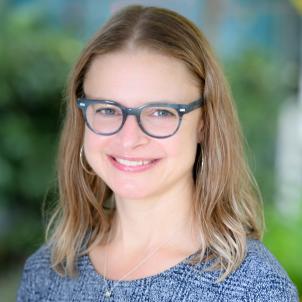
Peer Support Lowers HbA1c in Adolescents and Young Adults With Diabetes
Treating adolescents and young adults with Type 1 diabetes can be challenging. Beginning in puberty, blood sugar is often on a one-way trajectory: Up.
But now, research at Children’s Hospital Los Angeles has shown a novel way to possibly reverse this trend—without new medications or medical treatments. The intervention? Virtual peer groups.
The study found that, compared with standard care, adolescents and young adults with Type 1 diabetes who participated in virtual peer groups saw a 1.08% relative reduction in their hemoglobin A1C (HbA1c) levels.
Group participants also showed a fourfold increase in continuous glucose monitor (CGM) use. Results were published in Diabetes Technology & Therapeutics.
“These are significant shifts,” says Jennifer Raymond, MD, MCR, senior author of the study and Chief of the Center for Endocrinology, Diabetes and Metabolism at Children’s Hospital Los Angeles. “It highlights the importance of peer support, as well as the need to be innovative. To truly improve outcomes in this age group, we need to think far beyond our regular practice.”
An innovative model

The 15-month prospective study, called CoYoT1 to California, enrolled 68 patients with Type 1 diabetes, ranging in age from 16 to 25. Participants were 50% Latinx and 75% publicly insured.
“Young people from historically excluded or marginalized groups, including those on public insurance, tend to have higher HbA1c levels and encounter more barriers to care,” Dr. Raymond notes. “This is one of the first studies to look at how to design a model of care that improves outcomes in these individuals.”
Patients were randomized to receive either standard care or “CoYoT1 care”—which consisted of person-centered provider visits and recurring virtual peer group sessions.
The virtual groups took place every six weeks using an online video conferencing platform. Each session lasted 30-60 minutes and had an average of 4.5 participants. Sessions were led by a young adult with Type 1 diabetes who had been trained as a facilitator.
Each meeting addressed a specific topic, such as:
- Diabetes technology
- Diabetes burnout
- Managing diabetes at school or work
- Transitioning to adult care
The format was deliberately informal. “The goal was for young people to interact and drive the session, rather than for the facilitator to teach it,” Dr. Raymond explains. “We wanted participants to provide feedback and support for each other.”
Peer-driven learning
The peer groups particularly helped young people in the area of diabetes technology. Although only one session was dedicated to that topic, it spontaneously came up at every meeting.
By the end of the study, the percentage of virtual peer group participants using a CGM had risen from 11% to 47%.
That’s important because studies have shown that those who use CGMs tend to maintain better glycemic control. And yet, adolescents and young adults are the least likely group to use this technology.
“This age group has a lot of concerns about self-image and things on their body,” Dr. Raymond says. “What participants reported was that learning how to use the technology from their peers made them more likely to use it themselves.”
Although the peer groups improved both HbA1c and CGM use, the study found no impact on levels of diabetes distress or depression. A prior CoYoT1 study, in a different patient population, had shown a reduction in diabetes distress.
Dr. Raymond notes that the COVID-19 pandemic occurred during the middle of the study, which may have prevented improvements in distress and depression levels.
Giving patients a voice
One key factor in the success of the study was that patients themselves helped to design it via a special advisory board.
“That’s part of everything we do now,” Dr. Raymond says. “We want the patient stakeholders who are participating to tell us what they need, and then give us feedback on every step.”
Although this particular manuscript focused on the impact of the peer groups, the researchers are now working on publishing an analysis of the entire intervention.
The team also plans to make the virtual peer group materials available for other clinicians who want to create similar programs.
“It is possible to overcome disparities and inequities in diabetes outcomes, but we need to be intentional in how we try to close that gap,” Dr. Raymond says. “Not every model will work for every patient. The key is to give patients a voice and listen to what they need.”


